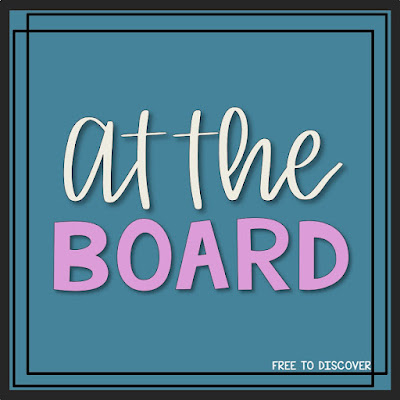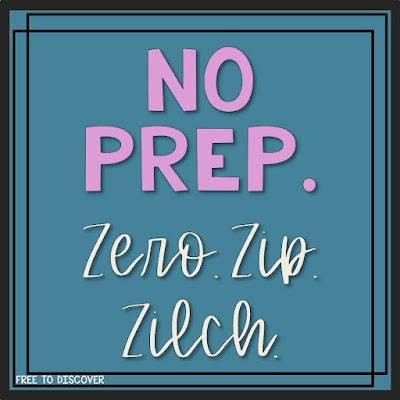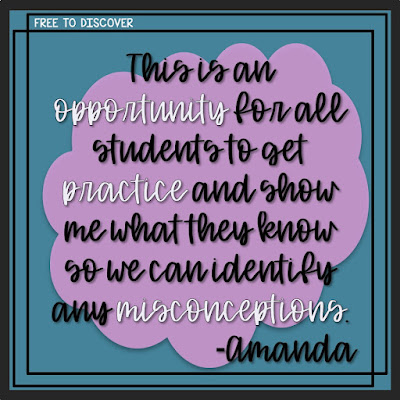
My Favorite Zero-Prep, High-Engagement Teaching Strategy
Time to share my favorite zero-prep, high-engagement teaching strategy. In this post, I'll share everything you need to know about At the Board. This resource can help you get started!
Students and teachers alike love At the Board.
If you're looking to:
🚀 increase participation,
🚀 monitor progress,
🚀 identify misconceptions or
🚀 just save time
then this is a must-try strategy!

What materials are needed?
Your students will each need a pencil and some paper. Ideally your classroom will have a large whiteboard. You will need 5 whiteboard markers and a couple of whiteboard erasers.
What should I prep ahead of time?
When I plan to use At the Board in my classroom, I do not prep anything ahead of time. Zero, zip, zilch. If you are comfortable coming up with relevant, appropriately-leveled practice problems on the spot, then you do not need to prep anything. If you're less confident with this, you could prepare or print a list of practice problems ahead of time.

Sounds good. So how does it work?
4-5 students come up to the front board at a time. All students - at their seats and at the board - will solve the same problem at the same time. I say aloud a math problem (equation, 2 points for slope, etc) and all students record it. Then all students solve at the same time. I focus on helping and checking in with my students who are at the board, but I also walk around to make sure all students are trying it at their seats. I encourage students to help each other out! This is not a gotcha activity. This is an opportunity for all students to get practice and show me what they know so we can identify any misconceptions.
Make sure that ultimately all students get to the right answer, then they can sit down. Be sure they leave the work up so students at their seats have models to view. I take a minute to highlight different strategies and point out notation I really love. Students can ask questions or you can walk through a quick explanation of the problem. Keep it short though. Students will get another chance with the next problem. Select 4-5 more students to come up to the board. They erase the work, then get ready for the next problem.

What else should I consider during this practice activity?
I start off with basic problems and gradually increase difficulty, and I tell students this. Want to get some volunteer hands raised quickly? Tell them that the problems will only get more challenging AND all students will go to the board at some point.
I always start by taking volunteers, but not everyone will be so willing. I make sure all students come up to the board before I start to take repeat volunteers. If I run out of volunteers, I pick non-volunteers - a nice way of saying I call on students without a hand raised to come up. (NOTE: Make sure you're familiar with your students individualized plans and accommodations. If this is not appropriate for a specific student, subtly allow them a pass.)
Strategically call on groups. Depending on the needs of my students, I may call up students who are all currently working at a similar level so that I can give them an easier or more challenging problem to solve. In other cases, I may group students heterogeneously such that there's a model in the group.
The most important thing to remember is to use growth mindset and confidence-building language to praise students. At the Board really pulls students outside of their comfort zone. Ensure the classroom climate is positive and supportive. This zero-prep, high-engagement teaching strategy will surely become your favorite once you've tried it! I'd love for you to share how it goes it in your classroom!
Join the Free to Discover community!
When you subscribe, you'll access our FREE monthly newsletter for secondary math students!

